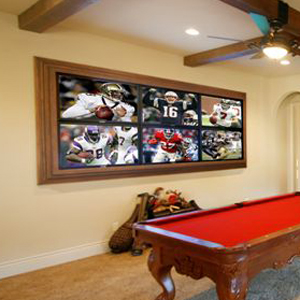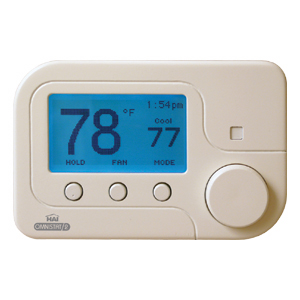 Keep your eyes peeled for more home control iPhone apps, new cell phone functionality, and on-demand video.
Keep your eyes peeled for more home control iPhone apps, new cell phone functionality, and on-demand video.
Where is home technology headed? We saw some great innovations—many in the TV world—at the recent CES 2010 show.
We also talked to some of our friends who make a living as custom electronics professionals (CE pros) to get their take on what’s big for 2010. Systems that can help homeowners curb their energy use are hot; so are multiscreen video walls and housewide high-def. The popularity and use of these technologies are no where near pervasive, but we’ve certainly seen a paradigm shift as custom electronics professionals and consumers are beginning to include them in their home designs.
CE pros understand that importance of staying on the cutting edge. If they don’t, they risk losing customers. It’s their job to introduce homeowners to the latest and greatest in home technology. Even if you don’t latch on to some of their ideas now, you’ll at least be able to keep a pulse of where the industry is headed, and can add these devices and systems when you’re ready
Here’s where home technology is headed, according to a few reputable CE pros we asked:
—More mobile control. Whether you’ve got an iPhone, BlackBerry, Droid or some other mobile device, you’ll be able to link to the systems in your house remotely through special programming (often free) downloadable applications.
—Voice control. “The ability to ask a computer or system to play a song or pull up a bit of information seemed far fetched a while ago, but with Rhapsody, Hulu, YouTube, and Google, it seems only a matter of time before someone will be able to provide an interface that will able to support voice control,” says Brian Duggan of Union Place, Excelsior, Minn.
—Video walls. Requests for video walls are increasing at Hi-Tech Home in Clovis, Calif., says company general manager Chris Green. “Whether it’s using six TVs that can be combined into one display or one large display that can be separated into four sections, a video wall is a lot of fun.”
—Energy management. Technology is and will continue to be used increasingly as a way to conserve energy. Curtis LeMaster of Control Designer in Orlando, Fla., sees huge potential for LED lighting. “It’s going to have a big impact.”
—Fiber optics. Entertainment is driven by content—both physical and downloadable. As the bandwidth requirements of this content increases, fiber optic cabling will become necessary, says LeMaster. “It is not well used in the residential market now, but this will change and change soon.”
by Lisa Montgomery
http://www.electronichouse.com/article/5_hot_technologies_for_2010/
Custom Installation Services, LLC – Home Theater, Audio and Video services in North Carolina and South Carolina



 The Smart Grid’s helpful little brothers may be the smart thermostats that do more than just monitor your home’s heating and cooling.
The Smart Grid’s helpful little brothers may be the smart thermostats that do more than just monitor your home’s heating and cooling.